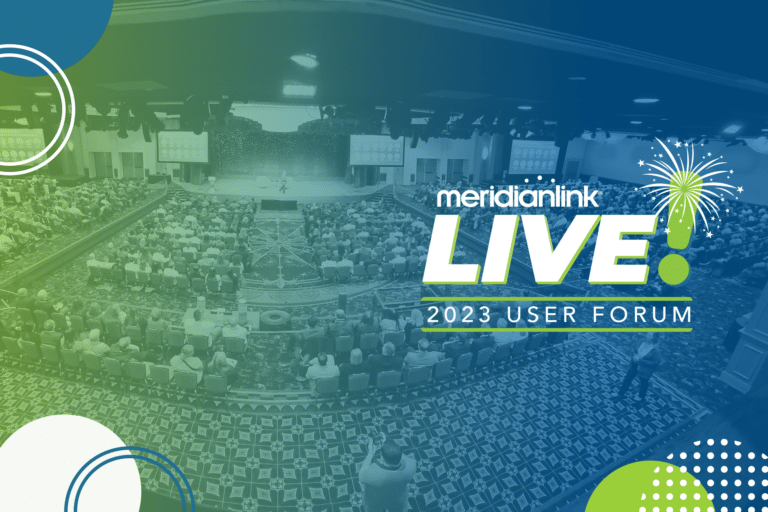Digital mortgage lending is no stranger to compliance and regulations or the stress they can create without a strategic plan.
Wolters Kluwer’s 2019 survey found that regulatory compliance and risk management were a top concern of US-based bank lenders and credit unions. A year later, those concerns had jumped eight points.
“Relatively high levels of concern remain across a range of areas, reinforcing the fact that regulatory compliance and risk management issues continue to significantly challenge financial institutions,” said Timothy R. Burniston, Senior Advisor for Regulatory Strategy with Wolters Kluwer Compliance Solutions.
If you’re already struggling to juggle your organization’s compliance risks, you’re in for more as the regulatory burden continues to grow. Having an enterprise risk plan in place that incorporates current policies while remaining flexible and prepared for future risks is critical.
Changing Regulations
Laws governing residential mortgage origination are constantly in flux and have been even more so in the past months. COVID-19 brought significant changes to the mortgage lending process. Here are a few examples of recent updates that should play a crucial role in any enterprise risk plan.
Updated Eligibility for Second Homes & Investment Properties
On March 10, a letter was distributed to single-family sellers by GSE Fannie Mae, detailing upcoming changes to the requirements for second home and investment property loans, effective April 1, 2021.
In order to be considered eligible for purchase, they must now all:
- Be underwritten with Desktop Underwriter (DU®),
- Receive an Approve/Eligible recommendation, and
- Be delivered as a DU loan in Loan Delivery
Fannie Mae did, however, include one exception: high LTV refinance loans manually underwritten “in accordance with the Alternative Qualification Path and delivered with Special Feature Code 840,” according to the letter.
The key to these tightening restrictions can be found in the new Treasury agreement, which limits GSEs’ investment property and second home loans to a maximum of 7% of the FHFA’s portfolio. Sellers were also alerted to more potential updates and negotiated terms coming down the pipeline later this year as Fannie Mae continues to comply with the new preferred stock purchase agreement.
New URLA Specifications
In April 2020, Fannie Mae announced an extension of the implementation timeline for the redesigned URLA (Forms 1003 and 65) and AUSs, due to COVID-19. The new timeline included a test period, from August 2020 to January 2021, where the GSE would accept a limited number of MISMO v3.4 loan application submission files and a new effective date of January 1, 2021.
As of Jan. 1, lenders could submit files using the newly redesigned URLA and were required to begin doing so by March 1. Unfortunately, lenders working with certain platforms that had not been updated to accommodate new URLA standards were unable to export new files to the Fannie website, leading to a wave of compliance concerns.
As of May 1, new loan applications using legacy Form 1003 will no longer be underwritten by DU and lenders need to use the redesigned forms available on the Fannie Mae website for all application submissions.
These are just a few of many updates made to mortgage regulations in the past year. By putting a risk and compliance plan into place now, you can avoid the risk of non-compliance and client and member backlash.
Creating Your Risk and Compliance Plan
A company’s compliance and risk plan is only as good as the strategy that goes into it. Here are the top four things to consider as you develop yours.
Avoiding Legacy Thinking
First, be wary of maintaining outdated compliance and risk strategies that no longer serve you, especially if they don’t allow for crucial upgrades as regulations and technologies change.
Hiring a compliance manager is a good way to start addressing compliance risks, but they shouldn’t work alone.
Ensure your plan can stand the test of time by implementing loan origination software (LOS) that works alongside your compliance hires, supporting their efforts and helping them adapt to new requirements in a timely manner. This way, you reduce risk by automating repetitive tasks and allow compliance managers to make more productive use of their time, such as focusing on policies coming down the pike.
Taking Swift Action
As recent updates to GSE loan policies and the Treasury agreement indicate, changes in mortgage compliance regulations can happen quickly and with little warning. How equipped are you to handle these changes as they come? Along with digital lending software that supports internal efforts, having the right solution partner who can address changes sooner than later can save you a lot of trouble.
Look for partners who:
- Have a deep-seated knowledge of the industry and your mortgage loan origination needs
- Offer a variety of integrated tools and solutions that help you stay on top of documentation and applications and customize your experience
- Provide consistent, reliable and ongoing end-to-end support
Getting Up-to-Par with GSEs
Your company’s plan, including any new hires, systems, and partners, must be as well-equipped to deal with industry details as with blanket compliance. Companies like Fannie Mae, Freddie Mac, and Ginnie Mae have their own set of compliance requirements that require constant vigilance and decisive action.
Hope is not a sufficient strategy for long-term compliance. Instead, protect your clients and your lending institution from non-compliance by creating a plan with regular, built-in checks for new GSE updates and changes regularly.
Proactively Preventing Compliance Risk
And finally, make sure that any strategy you devise has preventive measures built in for longevity. In an ever-evolving industry, being able to recognize and adapt to changing regulations is crucial, especially if you can identify them in advance.
Ask yourself these questions before finalizing your compliance strategy:
- How often are you evaluating the applicability of laws to your lending processes?
- What measures can you put in place to stay on top of upcoming new regulations?
- Who should be responsible for managing this information and creating new strategies for compliance response?
MeridianLink Mortgage
MeridianLink’s decades of industry experience make us the perfect partner for your mortgage lending needs. Our cloud-based MeridianLink Mortgage origination software empowers clients to process compliant loans and scale their businesses fast.






